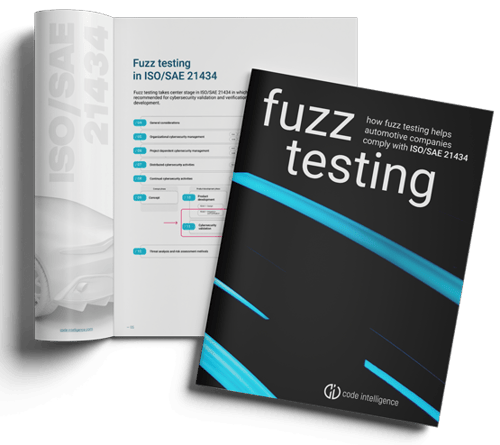Fuzz testing in ISO/SAE 21434
Learn how fuzz testing helps automotive companies comply with ISO/SAE 21434.
TRUSTED BY







Fuzz testing in ISO/SAE 21434
Inside, you'll discover:
- How fuzz testing contributes to ISO 21434 compliance.
- The specifics of cybersecurity validation and verification requirements.
- How suppliers and OEMs comply with ISO.
- The benefits of source code fuzz testing, aka white-box fuzzing.

Why comply with ISO/SAE 21434?
Even though the recommendations for ISO/SAE 21434 are not legally binding in practice, suppliers often find themselves obligated to comply with ISO 21434 as per contractual terms.
This is due to the set of the UNECE WP.29 Regulations 155 and 156 (R155 and R156). The mandates outlined in R155 and R156 are binding for vehicle manufacturers (OEMs), who must comply to obtain type approval and access to markets.
If companies supplying components to OEMs adhere to the ISO/SAE 21434 standard, it helps the OEMs meet the criteria of R155 and R156, secure type approval, and subsequent market access. Download the white paper to learn more.
